Care
In content, this is a rather simple and unpretentious plant, it is easy to grow it even for novice florists. The plant can grow in bright light and in the shade, withstands a large temperature range, and can easily do without watering for a long time. But still, with proper care, the leaves of the sansevieria become denser, the features of variegated forms appear in all their glory.
Indoor illumination can range from intense light to partial shade and shade. But bright light is preferable for sansevieria, it will contribute to the formation of strong healthy leaves and beautiful color. With a lack of light, the leaves acquire a dark green color, the brightness of variegated forms is lost, growth slows down or stops altogether. However, variegated varieties should still not be kept in the direct midday sun.
Temperature. Sansevieria can withstand both hot and cool conditions, but it is undesirable for the temperature to fall below + 14 + 16 ° C. In winter, it is necessary to carefully monitor that the leaves of the plant do not touch the cold window, the frosty air does not get on the plant when airing - lowering the temperature even to + 5 ° C causes hypothermia, decay and death of the plant. The lower the temperature of the content, the less often and less abundant watering should be.
Watering in the life of sansevieria is of great importance. It should be remembered that this is a succulent plant, it stores water in its tissues, and excessive watering will lead to decay and death of the plant. It tolerates long periods of drought rather calmly, but with insufficient watering, the leaves begin to wilt. Watering should be moderate, the soil should dry completely between waterings. The frequency and abundance of watering directly depends on the illumination and temperature in the room. The lower the illumination, the less often the plant should be watered. Water only on top of the pot, avoiding water getting into the center of the outlet.
For more details, see the article Watering rules for indoor plants.
Air humidity does not play any role for sansevieria, these plants are adapted to the dry air of savannahs.
The soil must be well drained throughout; for this, about 30% of the sand must be added to the universal soil.
Top dressing. During the growing season, plants should be fed with cactus fertilizers. If the sansevier is in the shade or the temperature of the content is low, then feeding should be reduced or completely canceled. An excess of fertilizers can cause rotting of the plant, loss of varietal characteristics, and deformation of the leaves.
A transplant is only required when the pot becomes cramped, every few years. Powerful rhizomes are capable of breaking the pot. When choosing dishes, preference should be given to wide and shallow pots, since the roots and rhizomes grow in breadth without going deep.
Read more in the article Transplanting indoor plants.
2.Sansevieria home care
2.1 Reproduction
Breeding is possible vegetatively - by cuttings, leaf cuttings or by dividing large plants during transplantation. The leaves of tall plants can even be divided into several dozen parts, each of which can be rooted.
- The division of large plants is carried out in spring or summer in such a way that each division receives a well-developed, own root system and ground part.
- Rooting is carried out in moist soil with a high sand content and it takes place quite easily, within 1 month.
- Successful rooting will be evidenced by the emerging new growth.
Leaves can be rooted even in water - the advantage of this method is that the whole process can be observed with your own eyes.
Unfortunately, plants rooted in water, when planted in the ground, adapt for a long time and start growing later than those that were originally rooted in the ground.
The first leaves that have just appeared in plants may be solid green, but over time they will become variegated again.

2.2 Transplanting sansevieria
Indoor sansevieria will need to be transplanted only when there is a need to change the soil or the plants are frankly cramped in the pot. Some species are even capable of breaking a cramped pot.
Often it is quite difficult to transplant a plant precisely because the earthen lump is completely braided by roots and the bush is difficult to get out of the pot. Before transplanting, such flowers are watered abundantly or even soaked in water for several hours to soften the soil.
In large tub plants, the top layer of soil is replaced with a fresh one in spring, instead of replanting.
Planting is carried out at the same depth at which the plant was before transplanting.
For disembarkation, you can pick up a shallow bowl.
It is not worth watering sansevieria immediately after transplanting - the way its root system will get used to new conditions, the first watering can be done in about a week.

2.3 When it blooms
The plant does not often please the lovers of indoor plants with flowering, but it looks very attractive even without flowers.
For the onset of flowering, it is important to place the plant in a close planter and minimize watering - these measures will stimulate the appearance of buds.
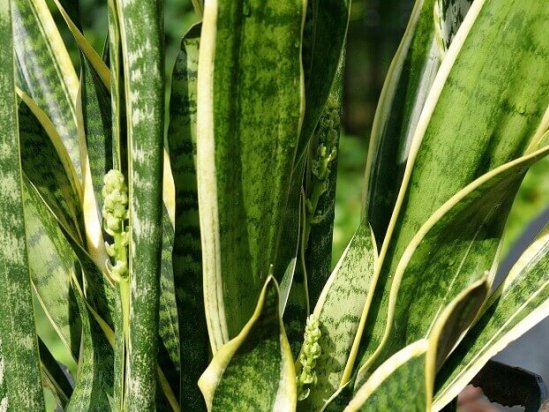
2.4 Soil
A mixture with a high content of coarse sand, well-drained with expanded clay, perlite or brick chips, is suitable - garden soil, coarse sand, peat.
A small amount of sphagnum moss can be added to retain moisture in the soil.
The substrate should have an alkaline reaction in the range from 6.8 to 7 and should easily allow moisture and air to pass to the roots of the bush.
2.5 How to care
One of the easiest to grow, beautiful plants, which can only be ruined by very gross and repeated mistakes in care.
Sansevieria will easily forgive both placement in the sun and in partial shade, hot climate and coolness, nutrient-poor soil, and it will need a transplant most often when it breaks the pot with its roots.
Tall specimens can fall to one side with age - provide such plants with a support - support and transplant into a heavy pot.
Bushes do not need to be formed, but old, yellow leaves must be cut off in a timely manner to maintain an attractive appearance. Trimming is carried out as close to the base as possible with a sharp, sterile instrument.
2.6 Diseases and pests
- In autumn and winter, with poor drainage or waterlogging of the soil, the plants rot.
- Direct sunlight on leaves during daytime hours can provoke sunburn.
- Rust.
- If the plant is deepened during transplantation, then it will rot.
- The leaf blades become covered with wrinkles and lose turgor, the flower withers with insufficient watering.
- When grown in the shade, the flower stretches and becomes loose.
- Leaves become lethargic if kept too cool - move the flower to a warmer place.
- Leaf blades turn yellow with insufficient drainage and excessive watering.
- From fungal diseases, leaf spot can appear.
- Leaves may curl if root rot develops.
Mealybugs, spider mites, thrips.
Insects are pests
3. Varieties:
3.1 Sansevieria Hanni - Sansevieria Hahnii
Low-growing, short-leaved plants forming basal rosettes of spirally arranged thick, fleshy, often striped triangular leaves. Plants are characterized by dense foliage.The color of the leaves varies and can be green with all kinds of specks and stripes - both longitudinal and transverse. The yellow-striped variations look extremely impressive. The flowers are creamy brown, with a sweetish aroma, but flowering rarely occurs in indoor conditions. Due to its compact size and unpretentiousness to lighting (Hanni sansevieria grows well under artificial lighting), this variety is very popular among flower growers.
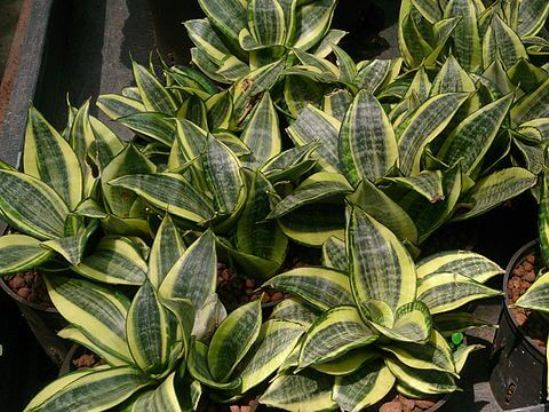
3.2 Sansevieria three-lane - Sansevieria trifasciata
It is a large evergreen perennial plant with high basal leaves (up to 1 m high). With proper care, this variety will last for many years. The leaves are thick, xiphoid, pointed, dark green with gray-green horizontal stripes. In spring or summer, adult specimens may develop small, fragrant greenish-white, fragrant flowers, but this phenomenon is rarely seen in indoor culture.

The three-lane sansevieria also includes a very beautiful variety - Sansevieria Laurentii - Sansevieria Laurentii - a tall, narrow-leaved plant with spectacular variegated leaves bordered with a yellow stripe. On the main green background, transverse dark, almost black stripes are scattered in the center of the leaves, and a wide yellowish border runs along the edges of the leaf plates.
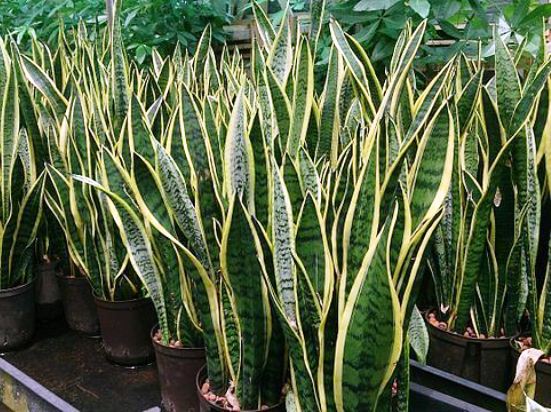
3.3. Sansevieria cylindrical - Sansevieria cylindrica
An interesting species with tall, sometimes gracefully arched, rounded, tubular leaves of dark green color with silvery transverse stripes. The leaves reach 3 cm in diameter, and grow up to 1 - 2 m in length.In the summer months, the plant throws out tall peduncles, at the top of which there is an inflorescence consisting of small greenish - white flowers, and this variety blooms at home much more readily than others ... Often, beautiful leaves of cylindrical sansevieria are braided into braids.

3.4 Sansevieria Futura Superba
A small species, often not exceeding 30 cm in height. Plants form a root rosette of thick, oblong leaves arranged in a spiral. The main tone of the leaf blades is silvery-green with transverse dark stripes. The edges of the leaves are white or yellowish.

3.5 Sansevieria Moonshine
The name of the variety - Moonlight speaks for itself - the leaves of this plant are colored in a silvery-green tint with barely noticeable dark transverse thin stripes. A dark green thin stripe runs along the edge of the leaf blades. The thick leaves of this sansevieria are 10 cm wide and 60 cm long.
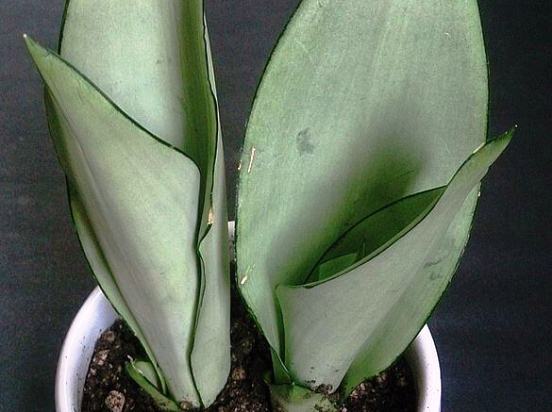
3.6 Sansevieria Black Dragon
Low, almost dwarf plants up to 30 cm tall with triangular leaves collected spirally into leaf rosettes. The main feature of this plant is the beautiful dark green, almost black shade of glossy leaves.
3.7 Sansevieria Kirkii
Very spectacular ornamental-leaved plants with large xiphoid leaves reaching a height of 90 cm. A distinctive feature of the species is the corrugated edges of the leaf plates and an unusual, attractive bright color of the leaves. The surface of the leaves is covered with a bronze patina, and the edges of the leaves have pink and white thin stripes.
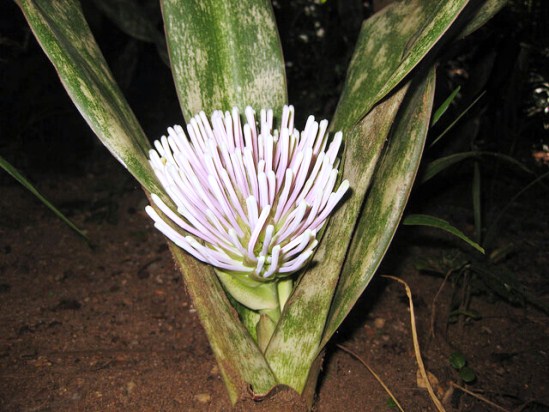
You may also be interested in:
Chlorophytum
Dracaena
Aspidistra
Ficus
general information
The flower got its name from the surname of Prince Sansevierio. He was fond of botany and invested in the development of natural sciences. Leaves, as a rule, are directed clearly upward. May extend to the sides or lie completely horizontal. Natural coloration - a combination of green and brown, striped and spotted patterns. Artificially bred species have yellow and silver shades in the color of the leaves. Growth rate - 2-3 leaves per year from one outlet.In natural forms, the leaves of most species are covered with a waxy film that protects the surface from excessive moisture evaporation. The pike's tail has a pointed leaf. In some species, it can reach a height of up to 1.5 meters. The graceful Hanni sansevieria grows no higher than 5-6 cm.
The rhizome of sansevieria is creeping, underground, in the form of a rhizome. So powerful that it can shatter the walls of a pot without being able to fit in it. The flowers are white-green, collected in a cylindrical inflorescence. The peduncle is straight, long. Narrow petals open in the evening. Delivers a pleasant vanilla or clove aroma. These notes can be recognized in the composition of expensive perfume. Fruits in indoor floriculture are almost never found. In nature, this is a berry with seeds, from one to three.
Types and varieties of sansevieria
Despite the difference in types, sansevieria is one of the most unpretentious and decorative indoor flowers. They are most often used by designers to create flower arrangements or interior decoration.
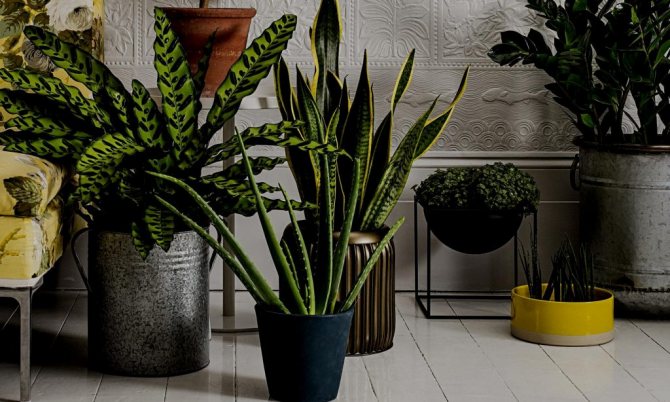
You may be interested in:
Choosing indoor plants for air purification Well-chosen indoor plants can significantly improve the indoor climate. Especially necessary ... Read more ...
Hanni
This undersized and rather beautiful houseplant was bred in 1941 from Laurenti Sansevieria by the famous breeder S. Khan. Hence the name. This rosette variety is no higher than 30 cm in height.
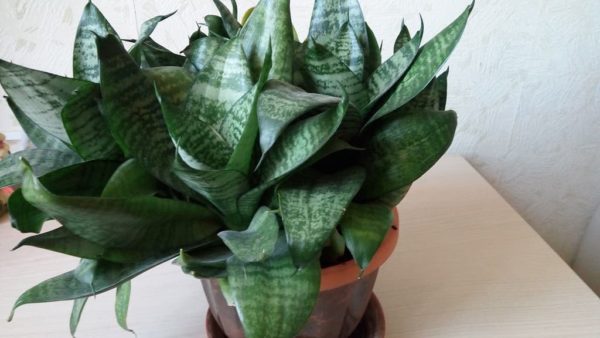
In 1953, Han received another variety with yellow stripes on the sides of the leaves - Golden Hanni.
Unlike other pike-tail species, this variety loves bright lighting, but note that in very sunny weather the plant must be applied. And in shady places, especially in winter, you need to make additional lighting
With the right light, the color appears brighter.
In summer, the temperature regime varies from 20 to 25 ° C, in spring and autumn from 18 to 20, and in winter and a dormant period of 15 ° C is the optimal temperature.
Three-lane sansevieria
Sansevieria of this type is the most common, and the height of this plant at home ranges from one meter to 150 cm.
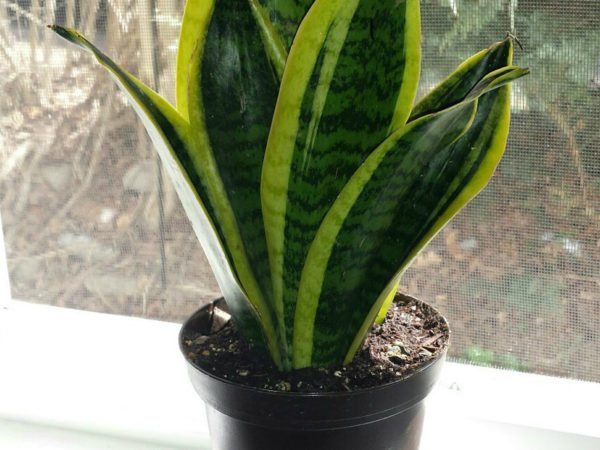
You need to place this view on light windows, with the exception of the northern ones. The leaves of the “mother-in-law's tongue” are painted in a rich green color, and at the edges are pale yellow shades. The leaf itself is covered with an unusual pattern, which adds beauty to the leaves.
Flowering occurs in spring or autumn: the flowers are small, very fragrant, light green in color. Soil for geraniums is quite suitable for planting and growing.
Cylindrical sansevieria
The variety of this sansevieria is unlike other species with its elongated leaves. The name comes from the shape of the leaves: they are rounded along the entire length, so they resemble a cylinder.
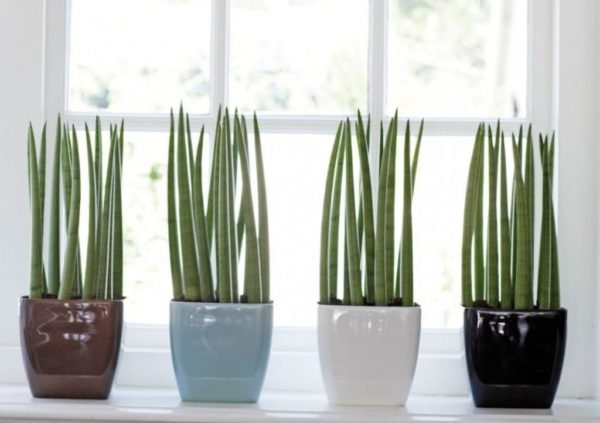
This species was bred by breeders, so they cannot be seen in the natural environment. At home, if you take proper care of the plant, it can reach a height of 130 to 150 cm. The flowers of the Cylindrical Sansevieria are also not like other relatives. They range from white to pink shades, appearing on a meter-long peduncle.
Laurenti
This is the main variety of Sansevieria, from which many new species have been bred by breeders. Laurenti leaves grow upward, and a yellow stripe may appear along the edge of the leaf.

Zeylanika
The most popular type of “pike tail”, which is in great demand along with the three-lane sansevieria. But this variety has its own distinctive features: the leaves of the zeilanik are wide and covered with small specks that have a silvery hue when the houseplant reaches maturity. They also have a traditional pattern, but there is no white or yellow stripe along the edge, they are located along the entire length of the central part.
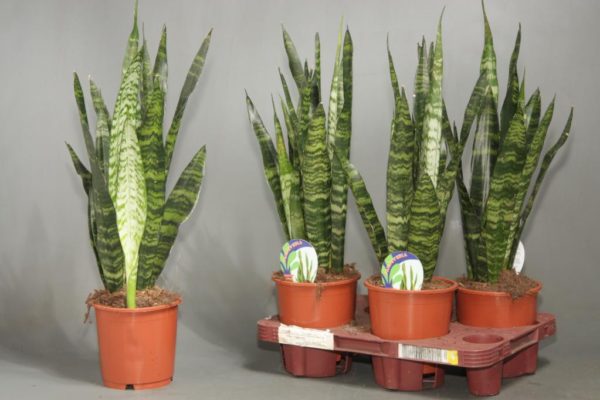
White sansevieria
Sensation Bantel or White Sansevieria - This species was bred in 1948 by breeder Gustav Bantel. This variety differs from others in its unusual color: the leaves have white longitudinal stripes alternating with dark green ones.

Due to the fact that white sansevieria grows rather slowly, therefore it is one of the rare species.
- Sansevieria Kirki;
- sansevieria Pingvikula ("walking");
- Sansevieria Staki;
- SansevieriaFrancisi;
- sansevieria Ehrenberg;
- Twisted Sister;
- sansevieria Eilenzis;
- Silver Queen.
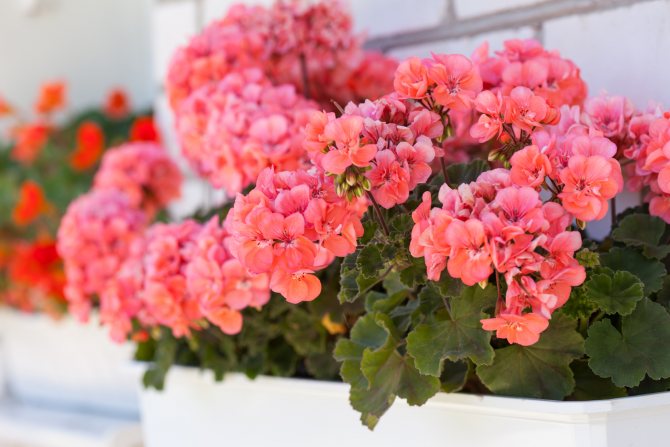
You may be interested in:
How to care for geraniums in winter? Many women love to grow flowers at home, because it is not only beautiful, but there is something to do in their free time ... Read more ...
Botanical description
Sansevieria Velvet touch (Sansevieria velvet touch) - belongs to the Asparagus family, a genus of perennial herbaceous ornamental plants. It is also known under the names Sansevera and Sansevera celindrica Velvet touch - in the Latin version.
Reference! According to some studies, Sanseveria is also attributed by some scientists to the Liliaceae or Dracene family.
The history of the emergence of the flower dates back to the 14th century. It was found in tropical and subtropical climates throughout South Africa. Sansevier got its name in the 18th century from the Italian scientist Raimondo de Sangro. It was he who discovered in this plant strong connective tissues at the cellular level.
Sansevieria Velvet touch is one of the varieties of Sansevieria cylindrical (also known as "Spaghetti" and "African hemp"). The plant grows without a stem to a distance of more than 1 m. The leaves are erect, tubular, hollow. The plant resembles a pointed cone with a leaf diameter at the base of no more than 2-3 cm.
The outer part of the leaves is velvety to the touch. It is naturally dark green in color, and the upper third of the leaf is colored with bright and safe dyes for plants of various shades. Inflorescences are presented in the form of brushes of a cream shade, which are located along the entire length of the peduncle up to 40-50 cm long. The rhizome is developed, powerful.
They grow in a natural halo in rocky areas of Africa, India, Madagascar and Indonesia.
The most common growing problems
As already mentioned, sansevieria are undemanding indoor plants that do not take up much space and do not belong to painful species. Unfortunately, the most resistant plants, with significant home care errors, can land in a bin or compost.
First of all, excess water should be avoided, which will result in root rot and plant death. If decay of the rhizome occurs, check the condition of the coma, remove the rotten parts of the rhizomes, sprinkle with charcoal any possible pruning points and wait until the plant is dry and plant again. Often, with rotting leaves, it is enough to remove the leaves and dry the substrate, then water it modestly. Remember, if the soil is too moist, dark, brownish spots will appear on the leaves.
If the leaves wrinkle, it is a sign of excessive dryness.
On the windowsill on the south side, the flower can get burned, it is better to avoid this side, home conditions are not natural conditions, and the scorching sun will not help the plant.
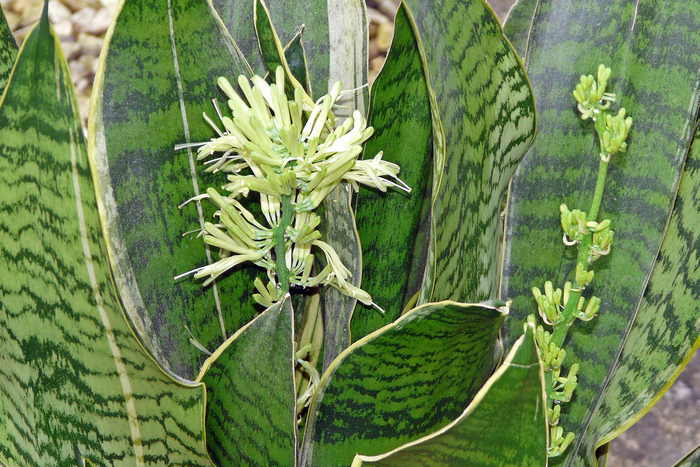
Weakened plants can fall prey to mealy beetles, which are easy to recognize; insects cover the flower with a waxy secretion that resembles cotton wool and worms. Both pests feed on sap and can be controlled using insecticides.
In a dark room, spotted specimens will lose the variegation of leaves.
Hungarian lilac: planting and care
Conditions for planting Hungarian lilacs
The most favorable period for planting Hungarian lilacs is from the second half of July to early autumn. If you plant a shrub in frozen soil, the planting may be unproductive.
Low lands, swampy and flooded in autumn and early spring are unsuitable for planting lilacs. Even if the water stagnates for a short time, young shoots risk dying.
Hungarian lilac: planting
Characteristics of the soil suitable for planting lilacs: moderately moist, slightly acidic or neutral, fertile, loosened, not prone to stagnant groundwater.
The distance between the planted bushes should be at least 2-3 meters. Planting holes are dug with sheer walls. Their size depends on the fertility of the soil - no more than 0.5x0.5x0.5 m on soil with medium fertility and up to 1x1x1 m on poor soil. The pit is filled with a substrate, which includes:
- humus (up to 20 kg),
- compost,
- wood ash (about 300 g),
- superphosphate, if you need to acidify the soil (no more than 30 g).
What to do:
- All components of soil fertilization are well mixed.
- It is better to plan the planting of shrubs in the evening, you should not do this in the open sun.
- Hungarian lilac seedlings should have developed roots up to 30 cm long, be well branched.
- The crown must be shortened a little (by a couple of buds), if the roots are too long, cut.
- The plant, prepared for planting, is set in the center of the recess.
- It is necessary to evenly and symmetrically arrange its roots inside the pit, fill the depression with a substrate and compact the filler around the stem of the lilac seedling.
- Immediately after planting, the soil around the trunks of the shrubs is watered abundantly, and after absorbing water, it is mulched with humus or rotted leaves (tops) with a layer of up to 7 cm.

Hungarian lilac: care
Loosening of the soil around the trunk during the period of plant survival is carried out 4-6 times. During flowering and active growth of young shoots, watering is done quite often, and in summer - only on especially hot days. It is necessary to loosen the soil three times per season, including in the spring, when the earth dries up, as well as when weeding.
Systematic annual pruning is done to maintain the beautiful shape and lush bloom of the lilac. However, in the first 2 years after planting, the shrub grows at a slow pace, which means that it does not need pruning and shaping. To highlight the skeletal branches - the base of the bush - you can start as early as 3-4 years.
Lilac shoots are pruned in the spring, until the buds swell. In this case, you need to carefully look at the buds and not touch those branches that promise to "flower", but walk along those that are located in the middle of the bush and, possibly, prevent young shoots from breaking through.
Hungarian lilac and wintering
Considering the fact that the Hungarian grows successfully even in the northernmost regions of Russia, one can guess that it tolerates winter and frosts perfectly, while it does not need annual shelter and rarely suffers from an aggressive climate. She quickly recovers, her shoots ripen until the very first frost. Even at the youngest age and during the growing season, lilacs do not require special preparation for winter.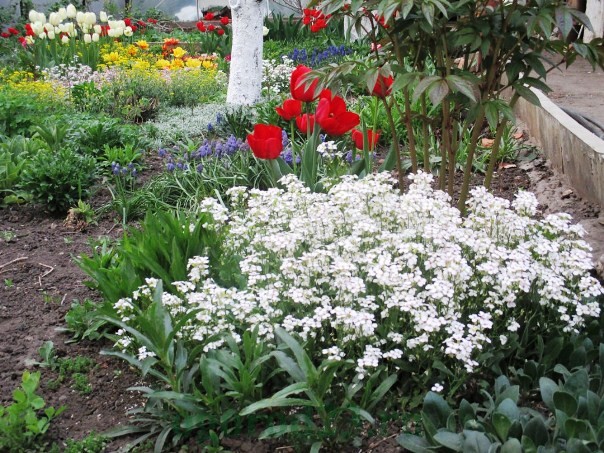
Fertilizing and feeding Hungarian lilac
Fertilizing under the lilac begins 2-3 years after planting. But from the second year after planting, the shrubs are usually fed with nitrogen - at the rate of 50 g of urea or 65 g of ammonium nitrate per plant throughout the season.
Most often, organic fertilizers are used (up to 3 buckets of manure under a bush), for example, a mullein, which is applied at a distance of 0.5 m from the trunk.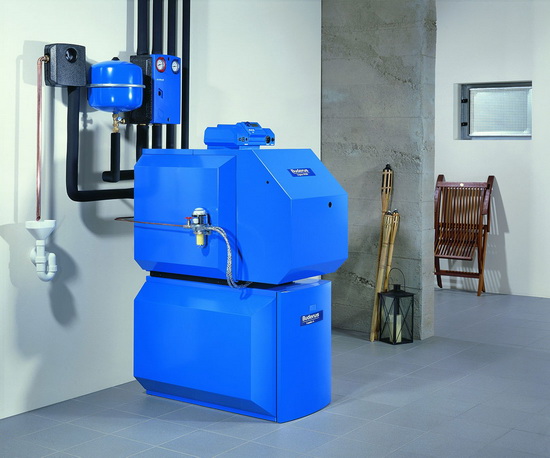
At the very beginning of its growth, the Hungarian needs nitrogen fertilizers, in the active phase of bud formation, it needs phosphorus, and in the middle of summer, the root system needs potash fertilizers.
If potash or phosphorus fertilizers are used, then they go to a depth of 8 cm - in the fall, once every 2 years. The proportions withstand the following: double superphosphate - 40 g, potassium nitrate - 35 g per adult shrub.
A burnt-out tree is considered the best fertilizer that contains the whole range of nutrients. For effective fertilization, stir 200 g of ash in 7-8 liters of water.
Description
Currently, ornamental Japanese cherry is grown in almost all corners of the world, crop care is not difficult, and the incredible beauty of a flowering tree transforms the garden landscape around you.
Japanese cherries come in a variety of shapes and sizes, depending on the variety or hybrid you choose. Only a few of them produce fruits that are not suitable for consumption.
The main value of the tree is its flowering, which occurs in the spring months and lasts about two weeks. Most cultivars develop flowers at the turn of April and May, but there are also some flowering cultivars that repeat flowering in the fall.
Flowers collected in loose inflorescences can be simple, semi-double or double, white or pink in color.
Leaves are elliptical, solitary, shiny, with jagged edges, green or red-green hue. In the fall, the foliage takes on a golden orange color, and the tree again becomes a bright accent in the garden.
The culture is allocated to the subgenus Prunus plum or according to other sources Cerasus. In the botanical classification, the name Prunus includes not only cherries, but also plums, peaches (P. Persica), apricots (P. Armeniaca), almonds (P. tenella and P. triloba).
Therefore, when choosing a seedling with the name Prunus, specify which subgenus the plant belongs to.
Features of the care and planting of Japanese cherries
The main criterion for choosing a place for planting cherries is protection from the wind and good illumination of the site. Almost all decorative forms of culture require a lot of sunlight, since in the shade the flowering becomes weak, and the tree itself is more often sick.
Sakura trees are not very demanding on the composition of the soil and can grow in both slightly acidic and neutral and even slightly alkaline soil, but good growth and abundant flowering provide a fertile and permeable substrate.
The culture is sensitive to a lack of potassium and nitrogen, reacting with untimely leaf fall and poor flowering. As a seasonal top dressing, compost or humus is added to the soil.
Despite the fact that sakura is resistant to short-term drought, the soil should not dry out. Regular watering is especially necessary for young seedlings. Mature trees are watered as needed.
To maintain the required soil moisture, it is recommended to lay a layer of compost or bark mulch with a height of 4-5 cm around the near-stem space of the plants.
Varieties that are sensitive to frost and young 2-3-year-old seedlings are insulated for the winter with agrotextile and mulch the soil around the trunk with a large layer of fallen leaves.
The basics of caring for sansevieria at home
The plant will then delight the owners with its beautiful appearance, if all the requirements for its cultivation, watering and ambient temperature are fully met.
Video "Growing and caring for sansevieria"
In this video, you will learn how to properly grow sansevieria and take care of the plant.
Lighting
Sansevieria grows well in bright sun and semi-darkness. The color of its leaves depends on the illumination. So, in the semi-darkness, the plant becomes pale, and the stripes almost completely disappear. In bright sunlight, the opposite happens. Immediately after planting, the plant must be gradually accustomed to the sun.
Temperature regime
The optimum temperature for the plant is 18–25 ° C. If the indoor temperature drops to 12 ° C in winter, sansevieria will feel comfortable. A drop to 10 ° C is critical. In this case, the flower may die. The lower the room temperature, the worse the sansevieria grows.
Watering
Since the homeland of sansevieria is the arid regions of Africa and Asia, it does not need intensive watering. For a fairly long period, the plant can do without water at all. Water the flower only after the soil dries out. Do not fill the sansevieria outlet, otherwise it may start to rot. The lower the room temperature, the less water the plant needs.The flower does not need additional spraying, but it is necessary to clean its leaves from dust and debris. For these purposes, a brush or soft cloth is perfect.
Planting and transplanting sansevieria
It is necessary to replant the plant based on how much it has grown. Young shoots are carefully separated from old ones and planted in a shallow wide pot. Land for planting / replanting requires light, low-nutritional and quick-drying. To avoid problems, it is recommended to take ready-made soil for cacti in stores. If it is not possible to buy a special one, you can use the usual one from the garden or flower bed. The only caveat is that it must be pierced before planting the plant.
Video "Transplantation and reproduction of sansevieria"
In this video, you will learn how to transplant and propagate sansevieria at home.
Specificity of cultivation
The unpretentiousness of the flower determines the love of millions of lovers of green pets for her. Sansevieria flower, for excellent well-being and beautiful appearance, requires:
- fertilizers: one or more times throughout the year;
- the correct location: the window sill is the best place with an abundance of natural lighting;
- proper watering: abundantly moistened soil in which three-lane sansevieria grows, and not only, is destructive.
Sansevieria can grow regardless of the position in the apartment. Perfectly adapts to partial shade and bright lighting. Growing indoors without natural light is acceptable. In such conditions, Hanni sansevieria and species with variegated leaves may lose their decorative appeal.
Sansevieria rarely blooms. Special conditions are required: a permanent place and the organization of diffused lighting. Those who want to see how the three-lane sansevieria blooms should know that this will be possible only if the flower “lives” in a small pot and the entire earthy coma is braided by the rhizome.


